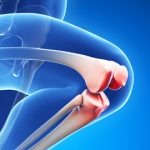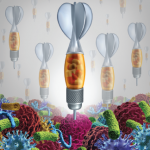An FDA advisory committee voted 18-1 in favor of approving romosozumab to treat postmenopausal women with osteoporosis.

Subcategories:Axial SpondyloarthritisGout and Crystalline ArthritisGuidelinesMyositisOsteoarthritis and Bone DisordersOther Rheumatic ConditionsPain SyndromesPediatric ConditionsPsoriatic ArthritisRheumatoid ArthritisSjögren’s DiseaseSoft Tissue PainSystemic Lupus ErythematosusSystemic SclerosisVasculitis

An FDA advisory committee voted 18-1 in favor of approving romosozumab to treat postmenopausal women with osteoporosis.

A study in mice suggests that targeting peptidyl arginine deiminases in lupus patients may have a therapeutic role in T cell-mediated diseases, affecting innate and adaptive immunity, as well as modulating dysregulated toll-like receptor 7-dependent immune responses…

In a recent Phase 2 clinical trial, patient-perceived pain and function measures improved with SM04690, an injectable, disease-modifying osteoarthritis treatment currently in development…

A recent study found that clinical practice guidelines for osteoporosis screening vary in quality and recommendations—even within the same country. Assessing guidelines from 13 countries, researchers found osteoporosis screening standards have not improved over time and many fail to include patients in guideline development…

CHICAGO—To drive home the importance of how social determinants can make or break a person’s health, Jillian Rose, LCSW, MPH, the director of community, engagement, diversity and research at the Hospital for Special Surgery in New York City, told a story about a gardener planting flowers at the 2018 ACR/ARHP Annual Meeting. In the story,…

CHICAGO—With an ever-strengthening foundation beneath the pathophysiology and prediction of rheumatoid arthritis (RA), the field may soon focus more intently on prevention, an expert said at the 2018 ACR/ARHP Annual Meeting. The session also covered the latest in remission targets and therapy de-escalation. RA Prevention Kevin Deane, MD, PhD, associate professor of medicine and principal…

CHICAGO—Although rare, when a patient has both primary immune deficiency and autoimmune disease, the combination can lead to life-threatening complications requiring careful, long-term therapy. In When Immune Deficiency and Autoimmunity Coexist, a session at the 2018 ACR/ARHP Annual Meeting, M. Eric Gershwin, MD, the Jack and Donald Chia professor of Medicine and chief of Rheumatology,…

CHICAGO—When it comes to correctly diagnosing joint pain in children, “things take time,” said Michael L. Miller, MD, quoting Danish physicist and poet Piet Hein. Children with pain but normal physical examinations may need to return to the clinic for repeat evaluation over several months. “I often tell parents that laboratory tests may help in…

BETHESDA, MD—Rheumatologists from the National Institutes of Health (NIH) and from Jerusalem, Israel, have identified deficiency of adenosine deaminase 2 (DADA2) as an important cause of familial polyarteritis nodosa, which tends to present in childhood and can manifest with hematologic, immunologic and inflammatory signs, says Chip Chambers, MD, founder and president of the DADA2 Foundation….

Manjinder Kaur, DO, & Sabina Mian, MD |
A 76-year-old Caucasian male with a history of abdominal aortic aneurysm repair five years earlier presented with three months duration of worsening periumbilical abdominal pain associated with nausea, non-bloody emesis, decreased appetite, fatigue and a 40 lb. weight loss. He denied having fever, chills, night sweats, temporal headaches, vision loss, chest pain, shortness of breath and…